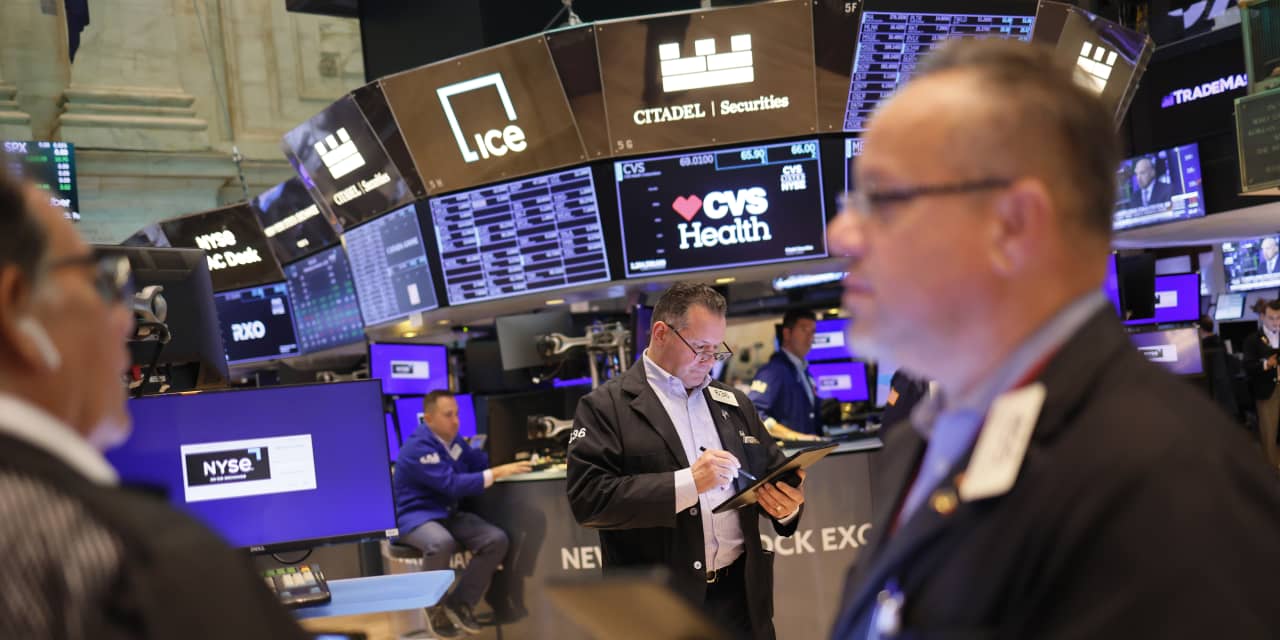The calendar says November, but it seems more like Christmas after the past week on Wall Street. All three indexes shot higher to their best weeks all year. The nagging question now is whether the rally can last.
Through Friday’s close, the S&P 500 and the Nasdaq Composite had their biggest percentage gains just shy of a year—Nov. 11, 2022— climbing 5.85% and 6.61%, respectively. The Dow Jones Industrial Average jumped 5.07%, notching its best week since Oct. 28, 2022.
Those hefty gains reflected optimism about a number of things, maybe most notably a Goldilocks jobs report that was strong but not too strong—another feather in the cap of those who believe the economy will sidestep a recession and the Federal Reserve is nearly done hiking interest rates.
It was a “Whew!” moment after a difficult few months. But it might be too soon to get confident that this run will last.
As it so often seems these days, the problem lies with the Fed: High bond yields, pushed up by the central bank’s rate increases, have been a headwind for stocks. Rate cuts would be welcomed with open arms—as long as the reason isn’t because of an economic slowdown.
“Bonds are leading stocks,” writes David Rosenberg, founder of Rosenberg Research. ”Stocks desperately need lower yields, but not for reasons that have anything to do with a recession—a ‘soft landing’ is still being priced into risk-assets in general.”
Indeed, the Fed’s signal last week that the end of rate hikes is approaching is a double-edged sword if data are showing a shakier economy, which many third-quarter earnings reports point to.
“Falling rates coming on the back of suddenly worsening economic data will not get the S&P 500 to 4,400, nor will it hold 4,300,” warns Tom Essaye, who founded Sevens Report.
“If economic data is starting to roll over, then it’s not an exaggeration to say we may be only approaching the most ‘dangerous’ time of the year, from a performance standpoint,” he writes.
Essaye argues that the market is largely “searching for ‘what’s next’ and not riding a wave of sustainably new information (positive or negative).”
So the question is whether the next catalyst will fall into the bullish or bearish category.
Gavekal Research’s Will Denyer is firmly in the latter camp, arguing investors should get out of equities while the getting is good.
“Leading indicators, whether of financial conditions, parts of the labor market, or elsewhere, continue to point to a disinflationary bust—i.e. a recession—in the not-so-distant future. But given the long and variable lags between policy actions and their effects in the real economy, we cannot know when any recession will arrive,” writes Denyer, who is Gavekal’s chief U.S. economist.
Yet not everyone is as gloomy. Ed Yardeni, who is president of Yardeni Research, believes last week’s data should provide investors hope that a soft landing—employers still hiring, wage inflation moderating, and productivity gaining—is still the most likely scenario.
“We think the stock market’s correction is over and that the S&P 500 is back on track to end the year at 4600,” he concludes.
Despite his much less sanguine outlook, Rosenberg agrees with Yardeni in at least one sense: The market has quickly re-embraced a bullish narrative. “The stock market has returned to complacency,” he warns, citing the sharp decline in the Cboe Volatility Index (VIX), the steepest since December 2021.
Of course, what came after that is history. Whether we’ll soon repeat it remains open to debate.
Write to Teresa Rivas at teresa.rivas@barrons.com
Read the full article here











Leave a Reply